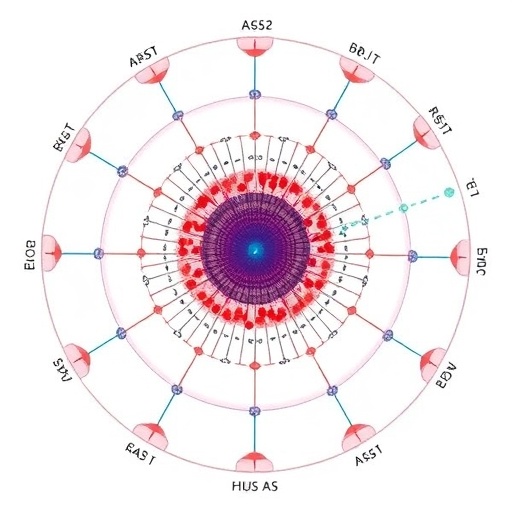In a groundbreaking advancement for Alzheimer’s disease research, scientists have demonstrated that switching the APOE4 gene variant to APOE2 specifically in astrocytes can significantly reduce amyloid plaque burden and enhance certain cognitive functions in a widely used mouse model of Alzheimer’s. This innovative study, published in Nature Neuroscience in 2025, offers promising insights into the potential for gene-targeted therapies aimed at altering disease progression even at later stages.
Alzheimer’s disease (AD) has long been associated with the APOE gene, which exists in three major isoforms: APOE2, APOE3, and APOE4. Among these, APOE4 is recognized as a major genetic risk factor for late-onset AD, whereas APOE2 appears to confer protective effects. Previous research has firmly established that APOE genotype influences amyloid plaque deposition, a pathological hallmark of AD. However, whether switching from APOE4 to APOE2 within specific brain cell types late in disease progression could ameliorate pathology and cognitive deficits remained largely unexplored until now.
The research team employed a sophisticated genetic engineering approach to specifically replace APOE4 with APOE2 exclusively in astrocytes—the star-shaped glial cells known to regulate neuronal support and amyloid metabolism. By crossing APOE4s2^A mice with the 5xFAD transgenic mouse model, which rapidly develops AD-related amyloid pathology, and administering tamoxifen to induce the allelic switch at 6 months of age, the scientists created a system to investigate late-stage therapeutic gene replacement.
Two months after inducing the APOE4 to APOE2 allelic switch within astrocytes, mice underwent a battery of cognitive tests, including associative fear conditioning and the Morris water maze. The results revealed a striking improvement in associative learning and memory, particularly in female mice, while spatial memory as assessed by the water maze test showed no significant changes. This dissociation suggests that astrocytic APOE genotype influences certain cognitive domains more robustly than others.
Critically, histopathological analysis of the brain tissues demonstrated that the astrocyte-specific APOE switch substantially lowered amyloid plaque load compared to controls. Quantitative immunohistochemistry revealed a pronounced decrease in total amyloid-positive areas in the brain, indicating that even after pathology has been established, astrocytic APOE2 expression can slow or delay further amyloid accumulation. Remarkably, this effect was regionally widespread, with significant plaque reductions observed in the hippocampus, olfactory area, and thalamus—regions heavily implicated in cognitive functions disrupted in AD.
To rigorously quantify amyloid pathology, enzyme-linked immunosorbent assays (ELISA) measured soluble and insoluble forms of Aβ40 and Aβ42 peptides from whole brain homogenates. The introduction of APOE2 specifically in astrocytes resulted in significant reductions in both soluble and insoluble amyloid beta isoforms, underscoring a comprehensive attenuation of amyloid pathology at a molecular level. These findings align well with the known roles of astrocytes in amyloid clearance and homeostasis.
Interestingly, the study found minimal sex differences in pathological outcomes, except for slightly higher baseline amyloid burdens in female control mice. The reduction in plaque load post-switch was consistent across sexes, implying that astrocyte-targeted APOE alterations have robust therapeutic potential irrespective of gender. While some subtle sex-dependent effects were noted in synaptic markers distal to plaques, overall synaptic integrity was preserved following APOE switching.
In considering other cerebrovascular impacts, the team evaluated cerebral amyloid angiopathy (CAA), another APOE4-associated pathology characterized by amyloid deposits in brain vasculature. Surprisingly, astrocyte-specific conversion to APOE2 did not significantly alter CAA burden. This suggests that while parenchymal amyloid plaques are strongly modulated by astrocytic APOE genotype, vascular amyloid deposition may be regulated by additional or alternative mechanisms, potentially involving other cell types or systemic factors.
Additionally, the expression of ZO1, a tight junction protein critical for maintaining blood-brain barrier integrity, remained unchanged after the allelic switch, indicating that the intervention did not compromise vascular barrier properties. This highlights the specificity and safety profile of the astrocytic gene conversion strategy, which does not appear to induce detrimental vascular side effects.
Collectively, the findings of this study offer compelling evidence that a targeted, late-stage allelic switch from APOE4 to APOE2 in astrocytes can alleviate key pathological and cognitive features of AD in a mouse model. By effectively reducing amyloid plaque burden and improving associative memory, this approach stands out as a promising avenue for therapeutic development that might be translatable into human interventions.
Tags: Alzheimer’s disease researchamyloid plaque burden reductionAPOE gene variantsAPOE2 alleleastrocytes and amyloid metabolismcognitive function enhancementgene-targeted therapiesgenetic engineering in micelate-stage Alzheimer’s interventionneurodegenerative disease progressionprotective effects of APOE2transgenic mouse model of Alzheimer’s





